Alexander J Young, Jr
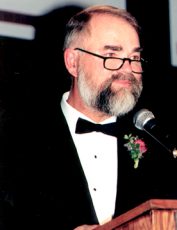
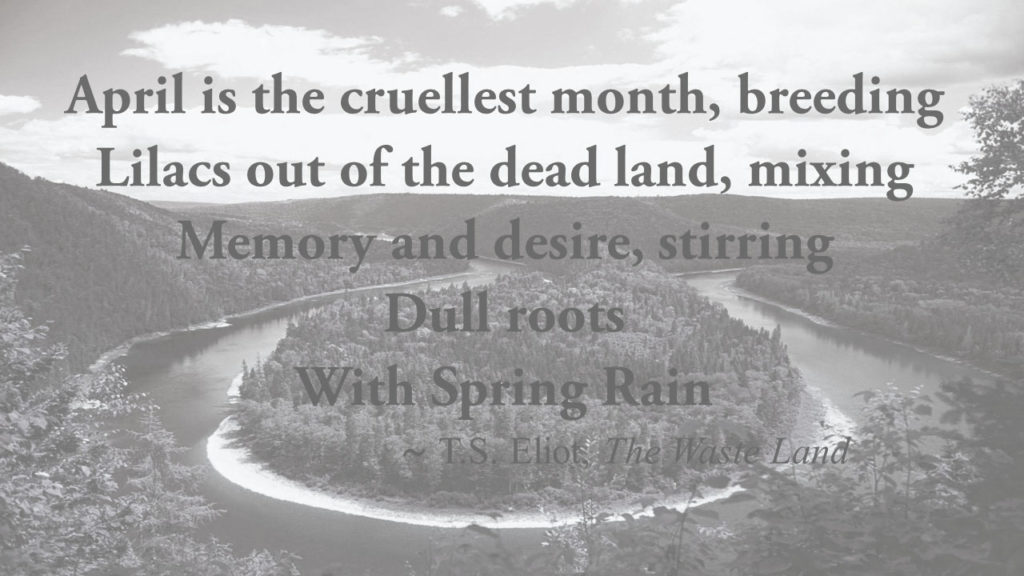
Restigouche River ~ runs from the Appalachian Mountains, northwestern New Brunswick to Chaleur Bay, Quebec
Sandy Young was and remains my dear friend. Ripped from this world by GI cancer, had he lived he would be 82 the middle of this month, 16 April 2020. I miss him greatly and think of him very often; he taught me so much, and more than any other person I have ever met, in his company, I and we laughed so brazenly, so deeply every single time we met. We shared an indescribable bond with perspectives about life that seemed to align so easily. As this year, shrouded in the COVID-19 pandemic, moves toward the 20th anniversary of his death, I choose to reminisce about Sandy, as I knew him, re-member our times together, and pay tribute to the man I knew and loved dearly. Both Sandy and I are trained sport historians and in the spirit of honouring that profession, I hope my memories are accurate. And, as with most history, there are true stories and perhaps more importantly, stories of truth.
I met Sandy in 1973 at a conference for what is now called PHE Canada – Physical & Health Education in Canada – held in Calgary. At the time, I was just beginning doctoral studies in Physical Education and History at the University of Alberta, Edmonton. Two of my classmates were from Calgary and they invited us to stay with them and attend the PHE conference, my very first formal academic symposium. Another classmate, David Howell had completed his MA degree on ‘A History of Horseracing in Halifax‘ and was voluminous in his praise for his thesis supervisor, Dr Sandy Young. Out of respect for David, never having heard of Dr Young, I saw the latter’s name on the PHE presentation program, slated to speak on ancient Greek sport – about which I knew exactly nothing at the time. As I recall the scenario now, I walked into the room and witnessed a dark-haired man, with a full, jet-black beard, white, short-sleeve shirt, pocketed, rhythmically chanting to his audience, “step-stomp, step-stomp, step-clank, step-clank, step-clank” while he step-stomped alternately on his feet deliberately building what I soon learned was a war-cry of shield-clanging, heavy-stepping, marching Spartan fighters to a crescendo when outflanked and outnumbered by Persian mercenaries. Turns out, Sandy wanted his audience to feel history. I was mesmerized. This man was teaching in a way I had rarely witnessed, certainly never experienced from any history class or historian – he breathed life into long-dead historical persons. After the session ended, boldly I suspect now, I approached Sandy, told him of my association with his former student. Bemusedly, he acknowledged the connection and seemed uninterested in any other conversation. I gushed something fairly inarticulate about Sandy’s presentation and left, convinced I had been in the presence of someone gifted at what they do. I was.
I didn’t see or hear from Sandy again until a post-North American Society for Sport History (NASSH) 1980 conference held in Banff. A group of us decided to host a research methods in sport history symposium in Edmonton following the Banff event. Sandy attended along with several of NASSH’s luminaries and it was at that symposium when Sandy and I connected and became fast friends and close colleagues. Truth was I idolized him and his command of a room and its audience when teaching and/or in discussions whether formal or informal. He seemed so deftly, confidently grounded, passionate, fun-loving, and engaging. Sandy filled any room just with his presence, his energy. His countenance beamed from within his omnipresent, black beard – often stroked and smoothed gently with his open right hand – white teeth glowing from his effusive smile. Almost 12 years my senior, our age and professorial experience differences just didn’t seem to matter. What united us so quickly was our mutual interest in teaching effectively and our unspoken conviction that teaching far outweighed the perspective of most of our colleagues who saw themselves primarily as researchers and teaching as their secondary duty.
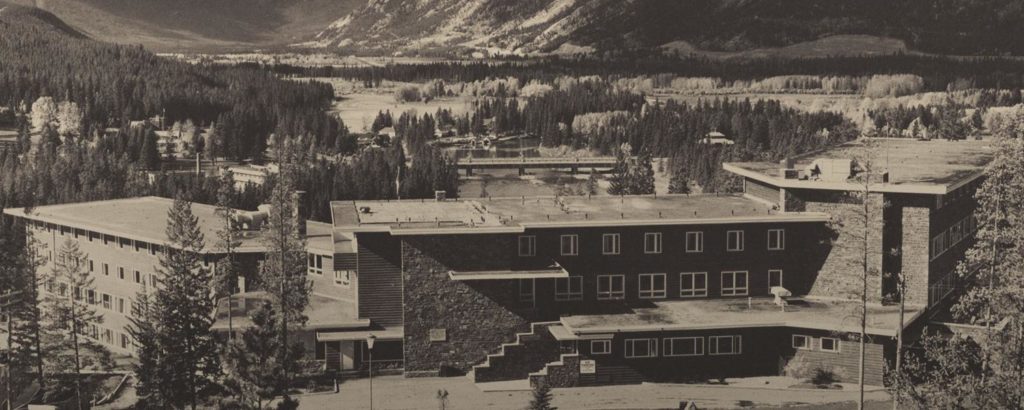
Banff, School of Fine Arts, 1980 NASSH Convention site
For the next 19 years, Sandy and I met at least annually at NASSH conferences. Because he lived in Halifax on the east coast, he usually flew to those conferences, invariably changing planes in Toronto and just as often having his luggage delivered 1-2 days into the conference. His baggage delays meant he had to find more clothing immediately; I knew as soon as he arrived at the conference site – Sandy not so amusingly tired and me laughing when he rolled his eyes at first meeting. We might have gone to similar sessions together at the conferences, I don’t remember but we did make a point of meeting for meals and sitting together at banquets, keynote presentations, and in the evenings. In fact, we were together so much at NASSH events that Sandy suggested our heterosexual preferences might be called into question.
He was not good at remembering names at the annual events so when we sat together or walked together, he would often say, “who’s that” and my job was to render the name accurately; he would then greet the person by name and then make a joke about their long-lost brother or some other fact from the person’s past – he had a phenomenal memory, just not for names of people he didn’t see frequently. And we always arranged to spend time together for 2 to 3 days after each conference, either staying in the host city or traveling to local points of interest. As a poignant example of those annual post-conference trips, I remember our visit to Sun City, the Acoma (Indian) pueblo about 100 km west of Albuquerque, New Mexico (that city the site of the 1993 NASSH conference). In particular, we climbed to the top of the mesa, an ‘island’ of rock that rises some 360 feet above the plain, more than a mile above sea level. What astounded both of us was the burial ground outside its church:
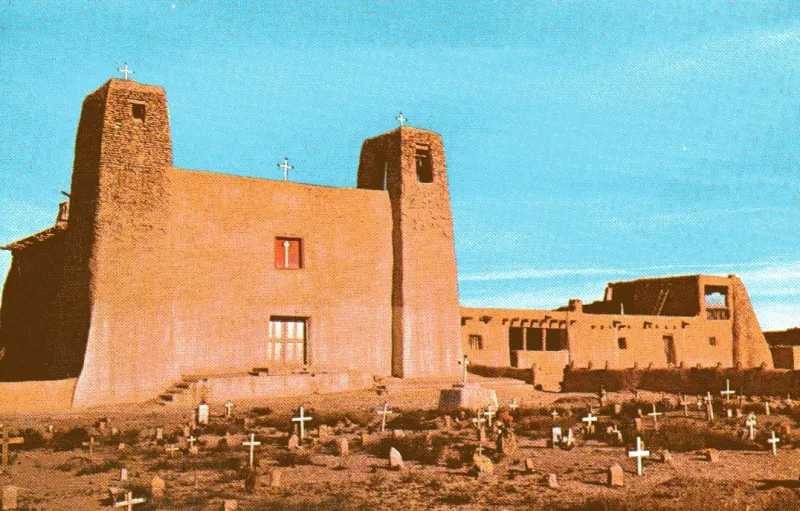
The churchyard of San Esteban del Rey, Acoma Pueblo
The mission church itself is famous but what astounded us was learning that to cover the barren rock, the earth in the graveyard had to be hand-carried in baskets. Moreover since the 1600s, there are now 5 layers of graves in the cemetery – bodies laid on top of each other, 5 times over.
In truth, it really mattered not where we went or what we saw, we just spent time in each other’s company. At Sandy’s request, we never stayed in the same hotel room or shared any kind of accommodation that didn’t have separate sleeping areas – Sandy snored, not lightly, and often, telling me his life-partners seemed accustomed to it but that he wouldn’t put anyone else near him at night. I remember one friend of mine who came to NASSH, did not have a room, and could not afford one on his own; Sandy graciously offered him his other bed, warning him in advance of his snoring. Turns out, my friend spent the entire night, “tortured,” his head wrapped in a pillow, trying to sleep in the room’s closet.
Sandy was born in New York city in 1938 – Alexander J Young, Jr. The “Jr” always intrigued me and if I asked about Sr or his mom, Helen, I don’t remember his answer. I do know he had two brothers, James and Bruce. At some point, his family moved to West Chester, a suburb of Philadelphia in Pennsylvania (in 1968, he cited an address, 201 North Bradford Avenue, but I don’t know if that was his family home). I know from his curriculum vitae that he attended Dobbins Vocational-Technical High School graduating in 1956. What I do know about that part of his life is that he was a highly-skilled basketball player; if memory serves, he told me he was the only White player on an otherwise Black-players’ team, probably the Philadelphia All-Star basketball team with or against Wilt Chamberlain who attended Overbrook High School in the same city and graduated Overbrook the same year Sandy did. At 17, Wilt-the-Stilt was 7 feet, 1 inch in height and if Sandy did play with/against him, this video clip underscores Wilt’s high school prowess in the mid-1950s. Sandy was my height, 5 feet 10+ so playing with Wilt must have been formidable and exciting.
From 1957-1961, on an athletic (basketball, I assume) scholarship he attended West Chester State College – now West Chester University of Pennsylvania – earning a Bachelor of Science degree. On his 1968 Vita, Sandy listed his “Major” as Physical Education and his “Minor” as History & American Studies; however, it wasn’t clear if that applied to his Undergraduate degree or all of his university degrees. Whispering Archway, pictured below, underneath West Chester State College’s Philips Memorial Hall lead to the campus’ quadrangle and the buildings Sandy would have frequented in the late 1950s:
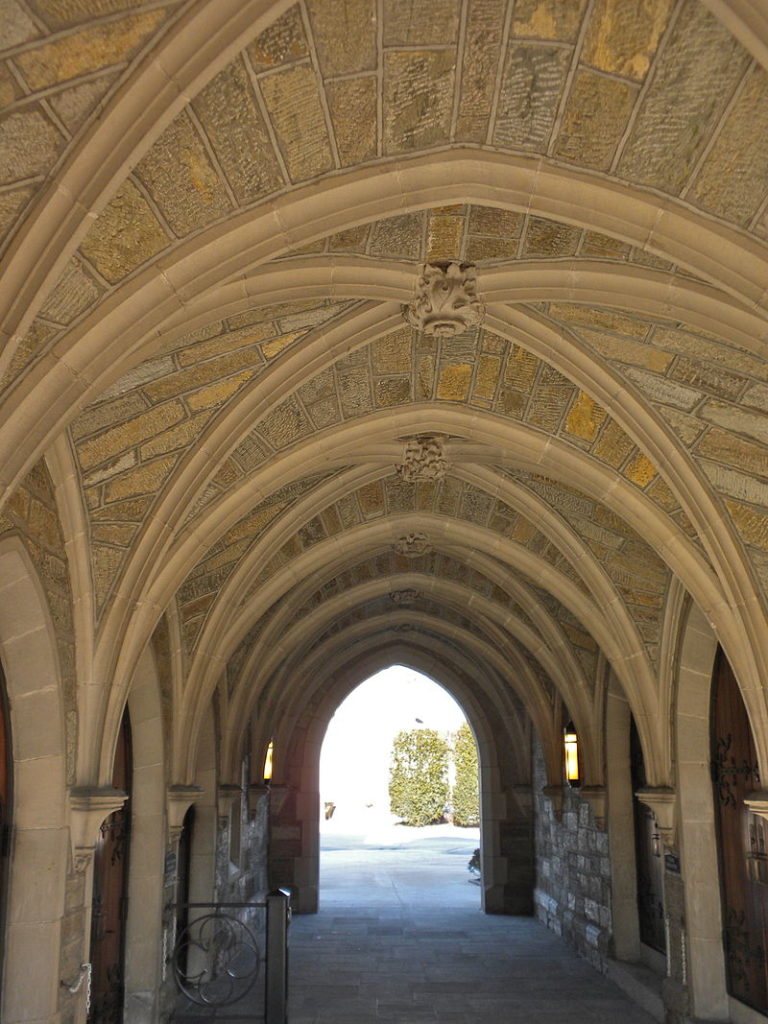
My inference would be he must have attained good grades and went on to attend the University of Maryland in Baltimore, earning a Master of Arts degree in 1963 and his PhD 5 years later at the same institution. Sandy was among a cadre of sport history graduate students who attended Maryland from the late 1950s through to the mid-1980s under the leadershp and supervision of Dr Marvin Eyler; many of those students – over 40 MA students and some 20 doctoral students – went on to academic careers in a variety of post seconday institutions in Canada and the United States. As an aside – and to illustrate the caliber of student Sandy was – there are two very fine essays paying tribute to and documenting Dr Eyler’s contributions to sport history scholarship; one is Marvin Eyler A Personal Tribute by Dr Alan Metcalfe and the other is Marvin Eyler and His Students by Dr David K Wiggins. I insert these two sources out of respect to my colleagues in the field of sport history and remind them of Dr John Lucas’ tribute, Marvin Howard Eyler A Consummate Educator – all 3 articles were published in a 2005 (the year Dr Eyler died) issue of the Journal of Sport History in honour/honor of Dr Eyler’s life and contributions [all 3 articles are freely available online to the public via the LA84 Foundation’s Digital Library Collections; out of copyright respect, the article links are from that site].
Sandy came under Eyler’s tutorship relatively early in the Maryland educator’s career, along with two other students, Thomas Davis and Paul Mills. Young’s 1963 MA thesis was on “Pre-Civil War Horseracing in Maryland,” perhaps a sport-specific interest shared with my U of Alberta colleague, David Howell mentioned earlier in this blog; I believe David was Sandy’s first graduate student. However, it was Sandy’s doctoral dissertation, “Joe Louis, Symbol” completed in 1968 after 5 years of PhD work that firmly established Sandy as a sport historian. I quote from Dr David Wiggins’ paper cited above:
“The most well-known of the three men [Young, Davis, and Mills] from an academic standpoint, however, was Young. He established a good and, in my opinion, largely unappreciated academic career at Dalhousie University. His dissertation on Louis is continually cited and in some cases, used as the interpretive model for academicians who have written about the great black heavyweight boxing champion. Anthony Edmonds, Chris Mead, and many others who have published works on Louis are indebted to Young for his groundbreaking research.”
Indeed. Sandy’s dissertation, Joe Louis, Symbol is remarkable in many ways. Firstly, it is obvious if one looks at the font in the dissertation title-link that it was printed on a typewriter, long before word processing and personal computers were invented. Sandy was a two-index-finger typist and I wonder now if he typed it himself or paid to have it done. From a content and sources’ perspective it is incredibly well researched, succinctly crafted, and it is no ‘mere’ biography of Louis. As Wiggins suggested above, its analytical focus on Louis-as-symbol was a unique and compelling method to explore the fighter’s sporting and cultural impact. Sandy always claimed, at least to me, that popular-writer-biographers of Joe Louis – he never mentioned names – “stole” liberally, maybe even plagiarized large parts of his dissertation; to the best of my knowledge, Sandy published three articles from his dissertation – all between 1969 and 1971. Perhaps he channelled his research energies more toward his passion for Nova Scotian, ‘local’ sport history. Finally, I think Sandy’s focus on the contributions of one person to the sport of boxing, to culture, to race relations foreshadowed where his attention would go once he moved to Halifax. Prophetically, the very first quotation in Sandy’s dissertation was
“History watches hands; not lips”
The words are from the classic treatise by Sidney Hook, The Hero in History (1945). Cleverly, I think, the quotation is apt for Joe Louis who made his mark with his hands. For Sandy, athletically, he had soft, gifted hands and other athletic skills in many sports – basketball, soccer, baseball, golf, and tennis, all of which he coached at the university level. More significantly to his career, sporting ‘heroes’ became his professional focus in a wide and compelling variety of ways.
Sandy’s 5 years as a doctoral student at Maryland encompassed dual roles; from 1964-66, he was an Assistant Professor at State University of New York, Farmingdale and from 1966-68, he served as Associate Professor at his Undergraduate home university, West Chester State College in Pennsylvania. Thus, he must have been working on his dissertation while employed either part-time or full-time at those two posts. Between 1968 and 1970, he might have taught secondary school; however, I have only a passing reference to those two years. More likely, he taught at West Chester for that two year period. In 1970, he moved to Halifax, Nova Scotia to assume a full-time faculty position at Dalhousie University’s 4-year-old School of Physical Education. Vaguely I recall Sandy telling me that when he applied, he wasn’t even sure that ‘Dal’ was in Canada…
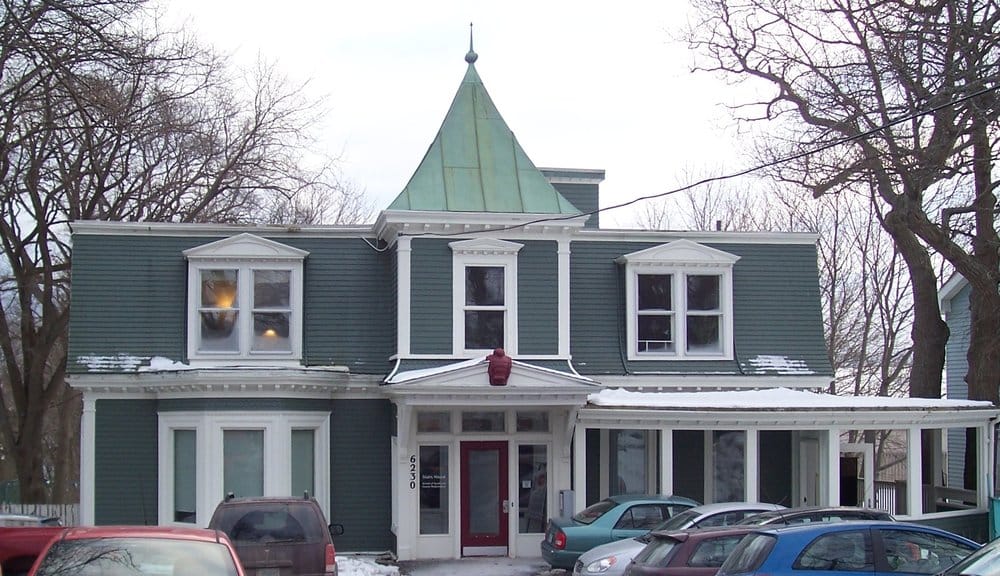
Stairs House ~ School of Physical Education building at Dalhousie Unversity, Halifax
I don’t know many precise details about Sandy’s first decade at Dalhousie. What I do know is that the PE Department building was a large house – Stairs House – refurbished to faculty and staff offices and at least one meeting room. Sandy’s office, by the time I first visited him in the early 1980s was a large room on the 2nd floor of the building with its window facing South Street. Over some span of years encompassing the 1960s and 70s, he married – quite ‘young,’ I assume though I don’t know the year – Louise and had 4 children, Nicole, Michelle, Julie, and Gabrielle (born between 1964 and 1971), all of them eventually became skilled, competitive volleyball players. In 1975, he earned Canadian citizenship status and Halifax wrapped its arms around Sandy Young and he reciprocally embraced the city and the province right back, becoming as “Bluenose” – an epithet dating from the late 18th century, one used to describe Nova Scotians – as any non-native to the province possibly could become.
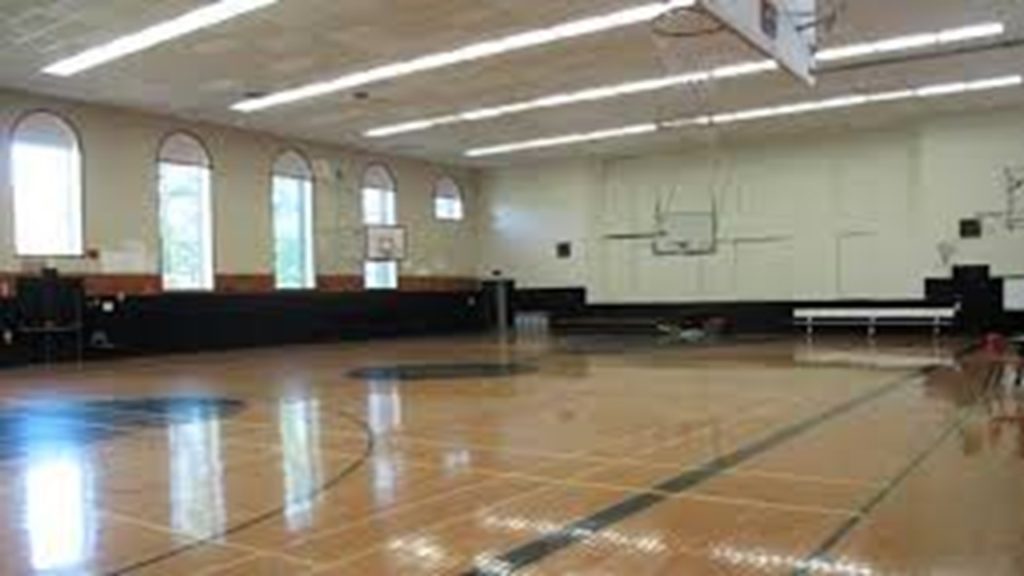
Studley Gym at Dalhousie
He brought and dispersed his West Chester-acquired basketball skills to co-create, with his Sociology Department colleague Herb Gamberg, “Noon Hoops” the very first year he was at Dal. Noon Hoops is and remains 50 years later “a sweaty, social, four-on-four tournament” played every weekday from 11:30-1:30. Herb and Sandy wanted the games to be open to anyone who wanted to play and the two of them worked to make sure teams were equal in game skills. Noon Hoops was first played in Studley – I think Sandy must have loved that name – Gymnasium and then when the superb, multi-sport facility, Dalplex was completed in 1979, Noon Hoops expanded to more court space and greater participant availability (the whole concept, including Sandy’s involvement is described in a 2018 The Coast newspaper article). In addition, Sandy must have played in some kind of city-wide or even provincial basketball league in playing for the Wandlyn Motor Inns’ team; Sandy is the only bearded player, # 4 in the team picture below:
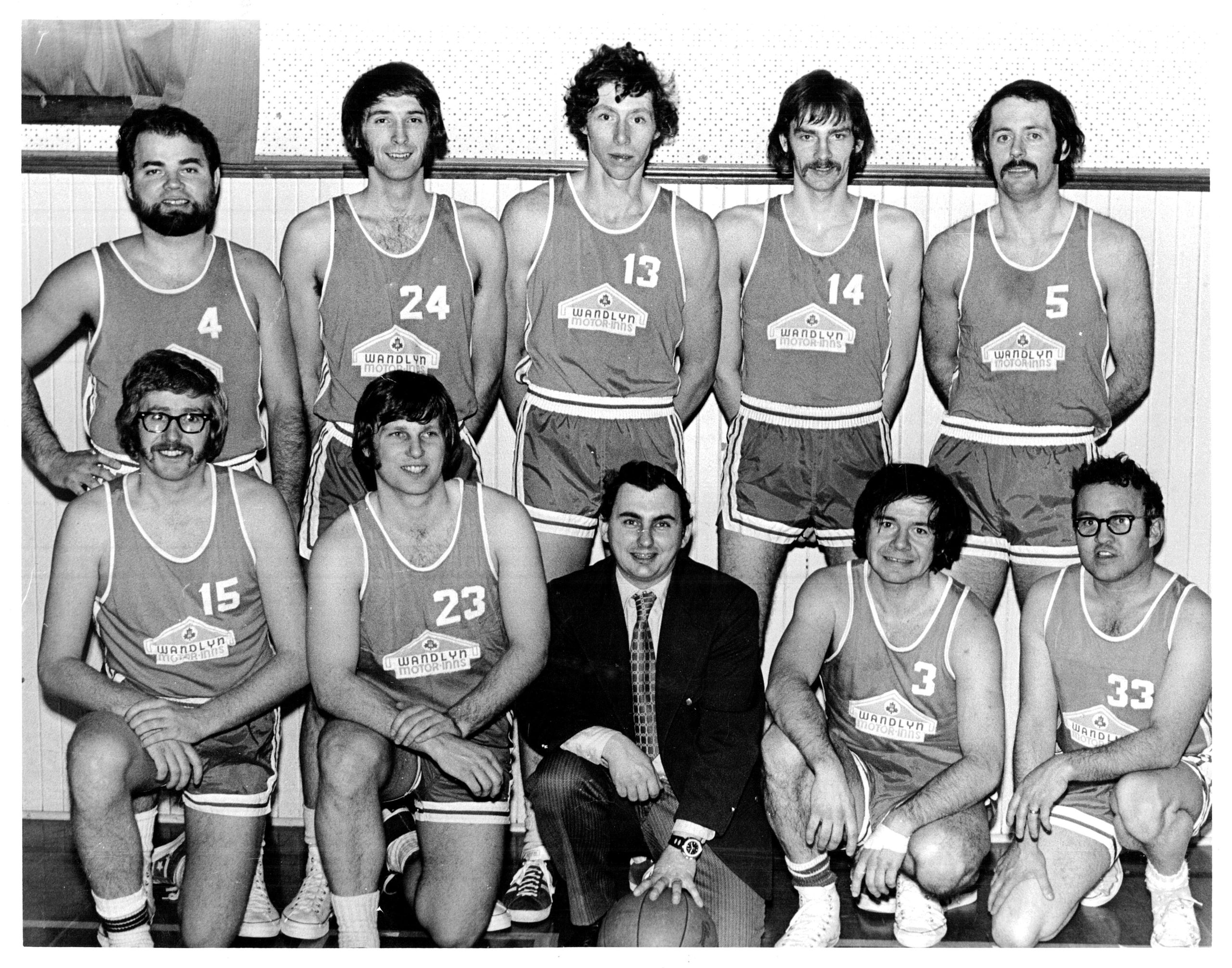
Very quickly, Sandy changed his graduate student research focus from American to Nova Scotian sport; his 1972 publication on boxer, Sam Langford, born in Weymouth Falls, Nova Scotia, remains a signficant marker for Young’s ability to delve deeply into sources and capture the sporting, personal, and cultural essence of one of the province’s most successful, world-calibre professional athletes. At some point in the late 1970s, Sandy was granted his first full year sabbatical; he chose to take his family to Belgium, Brussels, I believe. His primary sabbatical goal, he told me was to “become more Canadian” by spending most of his days learning French in a lab, from a machine source. I never heard him speak French to any great extent but his efforts to learn the language seem vintage-Sandy, that is, symbolic of his nationalistic commitments. Shortly after his sabbatical, his marriage broke down and he eventually divorced. I believe for most, if not all of the remainder of his life, his 4 daughters lived with their mother before they left home for their life-relationships.
By the time Sandy and I became friends in 1980, he had moved through the academic ranks and earned Full Professor rank; that status is an earned distinction of international, scholarly accomplishments among academics. By contrast, I was just “going forward” for tenure and potential promotion from Assistant to Associate Professor. In submitting my file, I listed Sandy as one of 10 potential referees – 3 got selected at the time and their identity was/is not known to applicants – to adjudicate my case external to the university. He and I had only just re-met so I didn’t declare any potential bias and at the time, there were very few Canadian sport historians to act as referees. In 1980, I had some 10-12, single-authored, periodical (academic-refereed) publications, 2 books, and one first-year teaching manual or monograph entitled Man and His Physical Activity. The latter was a syllabus used in a full-year course, one filled with selected readings, study guides, lesson objectives etc. Turns out, I was awarded tenure and promotion in 1981. After this had been formally announced, Sandy, at his discretion, revealed he had been selected as one of my referees, and graciously sent me a copy of his letter. In reading the letter I was very moved, flattered even, by his comments, how thorough and thoughtful he had been and then I got to the ‘ps’ below his signature on the letter. The ps read, “Oh yeah, Man and His Physical Activity…couldn’t put it down!” I roared with laughter. It was so typical of Sandy’s humour and clearly the ps had not been in his original letter of recommendation. It was he having fun with his wit, for my benefit. He used the monograph example for years, anytime we were at conferences and I was receiving any kind of feedback after a presention – “you think Morrow’s presentation was something, you really need to read his Man and His Physical Activity!”
Sandy’s sense of humour is almost indescribable except by examples. His infectious affability as a person was intertwined with his uncanny ability to amuse, taunt, cajole, and share anything from a smile to a chuckle to a deep-belly, beard-encased, gap-toothed laugh with me or anyone. Every note, letter, and email I received from him during the 1980s was signed, “FULL” – his Full professorial status and his subtle poke-fun way of reminding me he had it, I didn’t. Because he lived and immersed himself in the Maritimes, he always lightly ridiculed central Canada’s – particularly Ontario’s – air of superiority over, perhaps elitist views of – the eastern provinces. Before the 1867 Confederation of Canada, Ontario was called Upper Canada (Quebec was Lower Canada, likely related to the two provinces’ position in relation to the St Lawrence River and the Great Lakes). To Sandy, I was his “favourite snot-nosed Upper Canadian.” And he was a consummate advocate for correct use of grammar in every form of communication and in speech. I shared his grammatical perfectionism and we would use Winston Churchill’s famous declaration-example about one grievous error common in speech and writing
“Ending a sentence with a preposition is something up with which I shall not put.”
For a fact, Sandy’s premier unforgivable grammar sin was to use ‘reason why‘ in a sentence. Technically, it’s not a grammar error and is used widely among the most respected writers. It is a redundancy, as is ‘the reason is because’ – both reason and why mean the same thing – the reason I did it, why I did it is because….In the right audience, if someone used the two words together, Sandy would say, “oh, wasting our time…no such thing as reason why.” On more than one social occasion, if he and his partner heard someone use reason why redundantly, they would both leave the room or walk out the door declaring their time wasn’t valued. They came back in laughing; he just could not abide hearing reason why or seeing the two words in print in student essays. I think my favourite Sandy Young grammar/humour story was this one: he and his partner lived either in an apartment building or a house with a second story. They went away for a few days leaving their female cat enough food and water for their sojourn. When they came back, sadly, the cat had found its way out an upper window and fallen to the ground killing itself. Technically, it was Sandy’s partner’s feline and she was absolutely heart broken, sobbing and repeating, “Why, why did it have to be her!” Sandy said he waited three full days before he corrected her grammar…”why, why did it have to be she.” Apparently, Sandy was persona non grata for quite some time in their home.
Unrelated to his humour was his penchant for typing/word processing everything in upper case. His sentences and paragraphs were completely formed, punctuated accurately, just every word in upper case. It was a measure of efficiency, in his view – why waste time (do you hear an echo?) holding down the shift key! And, his prediliction was long before social media protocol determined the use of upper case in texts etc was akin to yelling. In my email system, I have retained a file called, aptly, “young.” In it, I have saved many of Sandy’s vintage emails dating back to the early 1990s; I cannot bring myself to delete the folder. Herein I offer one I particularly treasure, printed verbatim in young-ese:
FEBRUARY 13, 1999
DEAR DON
WILL YOU BE MY VALENTINE TOMORROW?
I SPEAK TONIGHT AT THE ROCKINGHAM HERITAGE SOCIETY AND WEDNESDAY NIGHT AT THE AMHERST SPORT HERITAGE BANQUETTE – TOO BAD THEY NEVER HAVE GOOD FOOD.
THURSDAY I LEAVE FOR GOLF IN FLORIDA – BACK THE NIGHT OF MARCH 1ST.
TEACHING HOW TO SPEAK IN THE NEW COMMUNICATIONS COURSE IS SUPER – I’M A HERO.
HOPE THINGS ARE IMPROVING.
LOVE
S
Very likely, signing his full name was tantamout to being self-evident and maybe another waste of time; never in any other email did he put the date – that would be in any email header, but in this case he wanted me to get the Valentine invitation. The “I’M A HERO” is less boastful than it might seem, more a reflection of his satisfaction in teaching something new. Sandy’s fondness for using humour and using it well endeared him to everyone. Just being in his presence seemed to bring friends, students, colleagues, athletes, family a sense of fun-connection in a uniquely compelling way. In physique, he was kind of round, portly perhaps, teddy-bear-like with his beard, half-smile, and penetrating, soft eyes. When teaching or giving a presentation, he looked over his half-glasses perched part-way down his nose – see his podium picture at the top of this blog – such that I/one/we felt he was looking directly at us, through us, into us. Sandy didn’t talk at you, he talked with you; he listened intently and he shared. If there were one word in the English language that would compress sandy-young-ness into the fullness of its meaning it is raconteur. In teaching, in giving a presentation, in delivering a hall of fame induction, in telling a joke, all with impeccable timing, he was story-teller supreme bringing to my mind Coleridge’s fabulous lines from The Rime of the Ancient Mariner poem, “by thy long grey beard and glittering eye / now wherefore stoppest thou me.” So says the wedding guest to the mariner in the poem. Haligonian mariner-elocutionist Sandy Young had comparable impact – his stories and his adroitness in relating them, orally or in writing held us spellbound by this grand, bearded (later in life, it was a sable silvered, acknowledgement to Shakespeare’s Hamlet for the term) narrator.
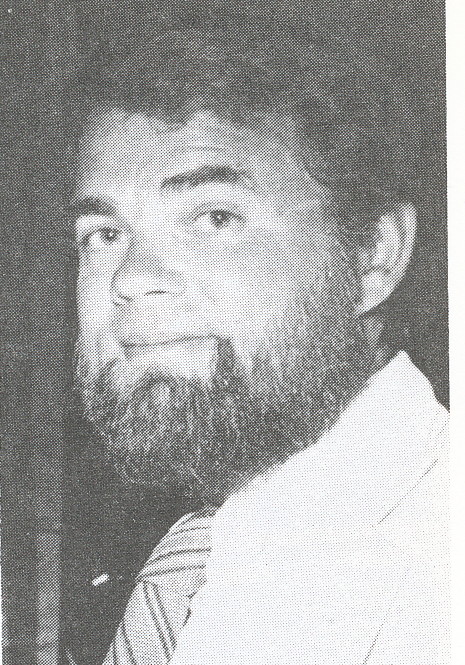
Sandy Young, circa 1987
From many, many possible instances, I want to offer two profound examples, both characteristic of Sandy-the-raconteur. The first is from a paper he published in Sport History Review in 1998; it was a gently updated, print-form of an invited NASSH keynote speech (Maxwell L Howell and Reet Howell International Address) Sandy was asked to present at the 1984 Louisville, Kentucky NASSH conference. It was and is an honour/honor to be recognized by his peers and certainly a testament to his scholarship and professional respect earned over his 18 years (counting his 4 years as a prof in the US before coming to Dal). In Dickensian fashion, Sandy adopted a persona, that of Clyde Clobber, a sport historian residing in Nova Scotia, to tell his story of becoming so immersed in Nova Sotia’s sport history. In the paper as he did in the speech, he related his existential crisis moment in time when he was surrounded by people doing medicine, discovering new engineering marvels while Sandy was teaching, writing about and extoling sport history in general and Nova Scotian sport history in particular. In short, he felt some shame in working in such an impractial area as sport history.
Sometime around 1980, a person for whom Sandy and I have profound respect, Dr Alan Metcalfe, the “father of Canadian sport history” (Sandy’s term and I concur) came from the University of Windsor to spend some time with Sandy, guest leturing in a few of Young’s classes. Over shared rum in Sandy’s kitchen, Sandy opened up about his sport historian self-deprecation. The “Metcalfe Robot” listened and incisively kept asking Sandy, “why,” skilfully drilling down on and mirroring Sandy’s passion for doing local sport history and what it – and he, Sandy relating it – meant to so many students and the communities to whom Sandy spoke. Sandy saw his historian-heart reflected back to him. I vividly remember listening to Sandy deliver his Clyde Clobber speech in 1984; he was personally and professionally vulnerable in revealing himself so openly and honestly in what is normally such a typically staid, academic environment. And he spoke with affect and humour and conviction and adeptly used Nova Scotian ahtletes to make his points to his colleagues, many of whom he acknowledged in the speech and the paper. His delivery was impeccable, riveting to the extent that at its and his end, he was given some few minutes of a standing ovation. The 1998 published version of that, by then 14-year old address I offer at the paper’s titular link, A Nova Scotian Perspective of Canadian Sport History After the Metcalfe Attack, with thanks to Human Kinetics for allowing readers to go to this link/page and click on ‘Download PDF” to see the complete article. Rarely, in my experience, have I witnessed someone so adept at taking such a full walk-around themselves with such insightful transparency.
My second example of Sandy-cum-raconteur relates poignantly to his honed gift and craft of teaching, in the broadest sense of the term. How he learned to teach his formal classes, “stealing” and adapting everything he could from anyone he saw teach and then leveraging those thefts into his classroom is revealed in the Metcalfe Attack paper cited in the previous paragraph. He amassed a huge collection of 35 millimetre slides, carefully hand-labelled and sorted into circular trays and stacked everywhere in his office, on all aspects and eras of sport history he taught. I watched him in class once when, using one single Ben Hur slide, he re-created the Roman chariot race as though he were a sports-caster in the Colisseum, complete with cheers and boos from the crowd. In order to get his students to do sport history and not merely lecture to them, he instituted a creative project idea. Students could create a painting of a famous athlete and present the story behind the painting in class or re-enact a sporting event. My two favourite ones, both of which instilled a fear of being arrested or harm being done in Sandy’s mind, were a staged cock-fight and an actual jousting re-enactment with a student on horseback. From various student evaluations and letters of appreciation he shared with me privately, he captivated his students with his teaching methods and care about their learning. Somehow, somewhere – maybe during his Undergraduate degree at West Chester State – Sandy learned statistics. As he told me, he just “got” stats and for some years, he taught an Undergraduate stats’ course so adeptly that students came from other sections of the course to attend his lectures.
Sandy wasn’t a traveller in the classroom or when presenting; he tended to pick a side of the room to orchestrate his class, particularly in using his slides. To me, what underscored Sandy’s pedagogical prowess was his voice. Where in the first page of his 1968 dissertation, he had quoted Hook, “History watches hands; not lips,” Sandy’s voice in teaching history was so alluring – deep, resonant, and utilizing inflections deftly. For more than 20 years, Sandy hosted or co-hosted the Nova Scotia Sport Hall of Fame induction ceremonies. By the 1990s, those events encompassed a thousand attendees and for an hour, Sandy regaled the audiences each year with sport history stories. This link to his 1992 NS Hall of Fame induction speech is vintage Sandy Young, raconteur, teacher, orator par excellence! In his own word, he sought, in those presentations and in his classrooms, to be “histirical.”
Sandy’s athleticism and interests in sport performances were notable. I watched him – I was no match for his skills – “lay a whuppin” (one of his favourite expressions) in one-on-one basketball – often for a pre-established small wager – on many NASSH members, several of them duped by his physique into thinking he would be a pushover. One NASSHer recalled that Sandy “was a wide body, king of the box out…and he had some sort of throwback 60s hook shot that never left him.” Whether or not he actually did win the games, he was a great trash-talker in any sport he played. In our early years at NASSH, he and I teamed up to play doubles’ tennis games against Ron and Sue Smith, both talented at the sport, as was Sandy. For a few years, he and I competed in squash and racketball – my advantage was my aerobic capacity and court coverage. He lost so often to me in those sports that he invented, literally invented Youngball. The latter was played in an indoor walled court of any size, usually a racketball court, with a volleyball, no other implement. You could kick the ball or hit it with your hand or any part of your body; otherwise, Youngball looked like any other court-racket sport, except the ball was served by hand or foot, server’s choice, could be volleyed out of the air in rallies but could only take one bounce maximum on the floor. Sandy never lost Youngball to me – he was so adept with his feet and much better bi-laterally than I was.
Golf, taken up later in his life, was another great love of Sandy’s. He would drive his car great distances – loved to drive, sporting his omnipresent black sunglasses with equally dark sideshades and neck-cord – to play with friends, often to Florida or Pennsylvania. He would line up courses, partners with whom to play, visit family on his way and always send me his itinerary, complete with names and family/friends’ phone numbers in case anything happened to him. At NASSH conferences, at least a half- or full-day would be built into the symposia during which time attendees were able to sightsee, relax, or, in Sandy’s case, golf, most often in the same foursome, he, Kevin Wamsley, Stephen Wenn, and Ron Smith. Always, always he played with a cigar in his mouth, putting it down occasionally to swing his clubs or to respect the green. One of Sandy’s mentors, Dr Russell Sturzebecker at West Chester State was an inveterate cigar-smoker, perhaps Sandy’s inspiration for his cherished habit. Though I never played golf with Sandy, just never cared enough for the game, I know he scored consistently in the mid- to high-90s and that he told and re-told stories and jokes to his playing partners’ delight. I did convince him to read Michael Murphy’s classic tale, Golf in the Kingdom, and he did read it, told me he loved the Shivas Irons main character and the story and proffered that golf, for him, was more about the friends he played with and the payful kibitzing among them than anything as “deep” as Murphy recounted.
When I visited Sandy in his home during the 1980s, he related to me that he did all his own renovation work, wood-working, and plumbing. For example, he moved their washing machine and dryer to the upstairs level – why, Sandy said, would you waste time carrying laundry to the basement when you undressed in your bedroom. He hadn’t been a handyman at all but he felt with a PhD, he could buy Time-Life or other books and learn what most of us rather would leave to various trades. He was a good cook though he rarely used a recipe and drove his partners crazy by announcing he was putting in a “pinch of salt” or “some” of another ingredient but he never measured the amounts. I remember one of his favourite foods was Billy Miner Pie, a decadent cream cake lathered in sauce and named after a famous Canadian bank robber (he loved to tell that story when ingesting the dessert). What astounded me when he took me through his duplex home not far from the Dal campus was the back of the kitchen – I think – door. It was laden with fishing flies. Sandy loved salmon fishing; he tied his own flies and every year he spent an “obscene amount of money” – I was never to tell NASSHers how much, I was never sure why – to rent an area along the Restigouche River (imaged and referenced with the T.S. Eliot Waste Land quotation atop this blog) to fly fish for salmon. I asked him what the allure to fly-fishing was for him; he told me if I hadn’t done it or tried it, he couldn’t explain the attraction. He did suggest I read Norman Maclean’s semi-autobiographical book, A River Runs Through It. I did and liked it so much, I used it in my sport literature class for years. I could admire the sport from a distance, Sandy spent hours casting immersed, literally, in the sport:
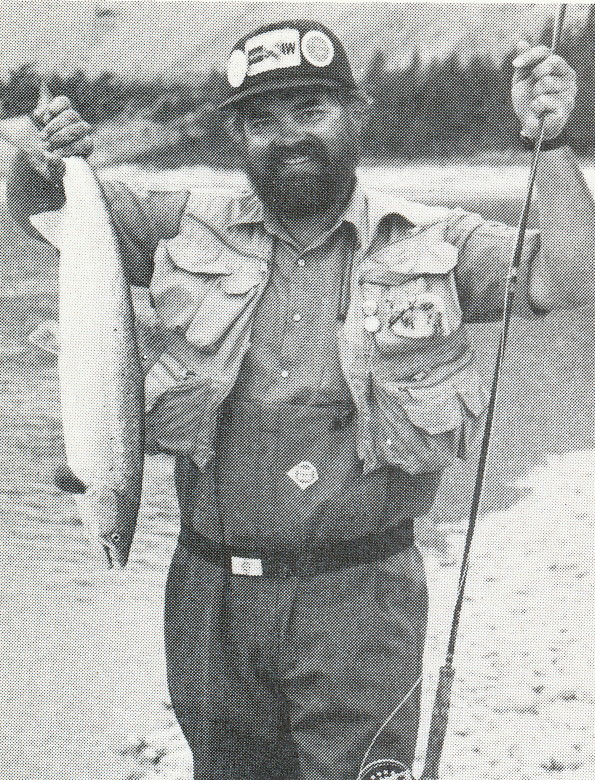
Sandy Young circa 1988
Our, mine and his, NASSH years together came and went – we met up in Banff, Mont Alto, PA, Manhattan…Kansas, Vancouver, Clemson, Saskatoon, Auburn and many other cities. At Tempe, in 1988, Sandy’s opus, a 2-volume book, Beyond Heroes: A Sport History of Nova Scotia, was among the featured new books in the annual NASSH book display.
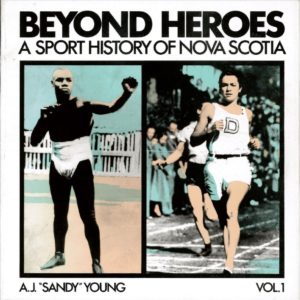
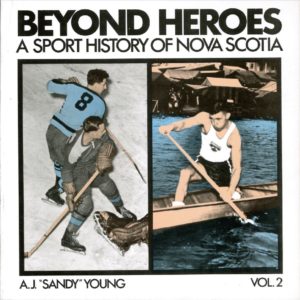
Fittingly, the title hearkened back to his dissertation on Joe Louis and his use of Sidney Hook’s, The Hero in History. The work was published by Lancelot Press Limited in Hantsport, Nova Scotia, the provincial publisher an unqualified prerequisite for Sandy and his editor and close friend, Heather Harris. In the Preface, Sandy was careful to assert the book, “…is an overview, which covers some but not all, sports important in the Nova Scotian experience.” He felt a comprehensive book on all sports in that province would be volumes long and take many, many more years to research and write. For Sandy the publication of his book was the culmination of years of work, hours and hours of newspaper microfilm research, athlete interviews, presentations within and outside North America, article publications, archival photographic searches and image reproductions, graduate student research and a wide variety of secondary sources. The title seemed then as it does now, so appropriate.
The book reads easily, liberally sprinkled with pictures from Sandy’s collection; it was an expert’s narration about the meaning of selected sports and athletes in the maritime province, beyond their accomplishments athletically. And it was something to add to the pantheon of “Canadian” sport history books that paid scant attention to Nova Scotia. Of singular importance, whenever he could make the point, Sandy was careful to rhapsodize that Nova Scotia could ‘prove’ it was the birthplace of Canada’s beloved sport of ice hockey. This was no less true than in the early pages of Beyone Heroes, Vol. 2, wherein he carefully amassed print media sources, literary works (especially those of Thomas Chandler Haliburton’s Sam Slick series of early 19th Century novels which described shinny games on Long Pond near Windsor, Nova Scotia), and secondary research to weigh his evidence. After 5 or 6 pages on the broad history of thesport, he asserted – with puffed chest, in my mind’s eye – in upper case,
THE HOME OF CANADIAN HOCKEY IS NOVA SCOTIA (page 15)
Sandy’s dedication in the book mirrors his lifelong skill in acknowledging people, really hearing them, respecting their stories, and offering direct, honest affirmations and/or advice. The last group of people he acknowledged in the dedication reads,
and to: the thousands of other teammates and opponents, those named and those who remain either unnamed or received a nickname you’ll never find in a phonebook…
What is a life worth and what legacy do we leave from each of our lives? Sandy Young’s life was extaordinarily ordinary – a down-to-earth, gentle man who, for the most part, knew himself well, cherished and celebrated life in so many ways and with so very many friends. Devoted to carrying and spreading the stories of Nova Scotian sport, he and his close friend, Pat Connolly, travelled the province’s rubber chicken circuit doing sport halls of fame and sport dinner speeches for years going to places such as Truro, Lunenburg, Amherst (the real Amherst, he’d say, not that ‘other’ one in Massachusetts), Annapolis Royal…and my favourite-sounding name of all the places I have records of his talks, Upper Mosquodoboit. Sandy had rules for dinner-speaking engagements; he was to be first on the program after dinner and would not stay for business meetings. In the latter regard, he loathed committees and committee-work – more a waste of time, he felt, for any real service or accomplishments they made in proportion to the time they monopolized. When he served as President of the Dalhousie Faculty Association in the mid-1980s and also when he was Director of the School of Health and Human Performance (a position he did not want until his colleagues came to him, as a group, and entreated him to apply for the administrative post) at Dal from 1989 to 1993, he sent out memos and/or emails informing his executive and then Department members of decisions and actions he intended to make. If one person wanted to have a meeting to discuss any of those items, only then would he call a committe meeting. From his peers at Dal, I am told that when Sandy did have meetings, he ran them extremely well.
Just before the 1998 NASSH conference in Windsor, Onario, not far from my home, I met Sandy, briefly on his drive across the country. He got out of his car, no smile, just a slight grimace and said, “Don, everything hurts.” At the time, I thought it was just his long drive to Upper Canada. At some point that year – it was a Friday – Heather Harris came out of the Atlantic Superstore in Quinpool in Halifax and ducked into Shoppers. Sandy was there, it was just after supper. He looked at her, tears in his eyes, said he had been itching for weeks and had seen his doctor that afternoon, “there was a tumour.” Sandy went through at least 3 operations, chemotherapy and I don’t know what other treatments. He came to one more NASSH, at State College, PA, emaciated but in amazingly good spirits. He wasn’t up to playing his annual golf game with his foursome but he rode in the cart, just did not want to miss the conversation. At that conference, I had the honour of presenting a kind of workshop session with Sandy; it was on the art and craft of teaching. He sent me what he was going to present in his part of the session a few weeks before that NASSH. To my mind, it is still relevant and I offer it here as part of Sandy’s legacy ~ Young on Teaching 1999.
On 8 January 2000, Dalhousie University hosted a roast/toast of and for Sandy. Hundreds attended the reception, dinner, and speeches afterward, all held at the University Club Great Hall. To say it was special would be a descriptive understatement. A few of us were invited to present with careful time limits sent to each of us. Sandy, affable, smiling, and in some stage of slight remission, sat just below and beside the podium, having insisted that he be last to speak. Legs crossed, intent on each speaker’s words, he took notes in a tiny, spiral-bound book to remind him what to say when it came his turn. It was an evening of friendship, kindness, tears, laughter, and love shared toward and with Sandy. I watched Sandy throughout the evening and I cried when he laughed uproariously at the start of the Dean of the Faculty of Health Professions’ speech. Dr Lynn McIntyre was eloquent and so, so respectful of Sandy. When she reached the lectern, she paused for what seemed like minutes, turned toward Sandy, then to the audience, briefly acknowledged us, and then said, and I paraphrase, ‘We all know Sandy’s fondness for women and relationships; I look around the room tonight and realize, I am one of the few women here with whom Sandy has not slept.’ I honestly don’t remember literally what Sandy himself said that night but I do remember how well he spoke, how engaging he was, and how deeply grateful he was to all assembled to honour him so handsomely.
We shared emails and phone calls and I went to see him in hospital once more that Spring. He was clear with me that he didn’t want to talk about “it” and so we just talked, he asserting after every female nurse attended him or even just walked by, that she/they “want you bad.” I stayed in his apartment, # 918 at 45 Vimy Avenue, with its view onto Bedford Basin. On 6 August 2000, Aexamder J. Young Jr. died in that apartment home with 3 of his daughters, long-time friends Lesley Barnes, and Ruth and Herb Gamberg at his bedside. Posthumously in 2002, and so appropriately, Sandy was inducted as ‘builder’ into the Nova Scotia Sports Hall of Fame; three years earlier, the Hall of Fame presented him with a special award of recognition at a ceremony he was able to attend. The first 4 minutes of this clip recorded the tribute paid to him that evening (in 1993, the Hall had recognized his contributions with a Volunteer Award). Dalhousie University renamed its top athletic award to the Sandy Young Award in the year that he died. At Dr Stephen Wenn’s instigation, Wilfrid Laurier University’s Kinesiology department grants a Canadian sport history award each year to a deserving Undergraduate student – “Upper Canada” gives back to Sandy, he’d chuckle in delight.

Addendum ~ on 26 July 2020, some 3 months after completing and posting this blog, I read a CBC news article that announced Steve McKinley’s creation of a mural celebrating 150 years since the birth of George Dixon in Africaville, Nova Scotia:
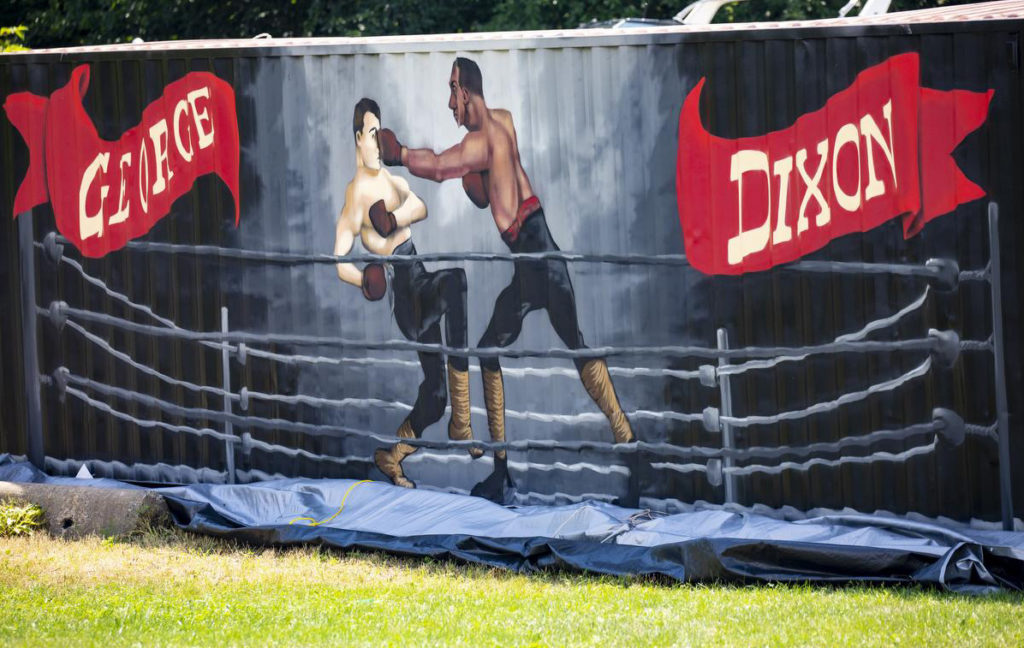
Significantly, Dixon, a boxer was the first black athlete to win a world championship in any sport. “Little Chocolate,” as he was dubbed then, was a superb bantamweight fighter and the subject of one of Sandy’s earliest articles on Nova Scotian sport heroes. In no small way is the province indebted to the work of Dr Young in proclaiming its athletes and igniting interest in them. And I know he would be delighted to see his work amplified and developed in this mural and in other tributes to Dixon such as this 2015 youtube video-tribute to George, or, this 1906 American mutoscope and biograph of a 1906 fight between Dixon and Chester Leon.
